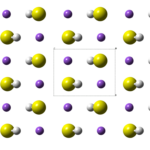Introduction Sodium Hydrosulfide (NaSH) solution is an alternative product to sulfur from hydrogen sulfide. Much hydrogen sulfide ends up on solid bed medias such as iron sponge or Sulfatreat®. This is disposed of in landfills. These processes are justified in most cases. Depending on your production rate of hydrogen sulfide, a Claus Unit may be just what you need. … [Read more...]
Hydrogen Sulfide Removal from Refinery Gas Streams
Hydrogen Sulfide (H2S) Hydrogen Sulfide (H2S) is a colorless, flammable and extremely dangerous gas. It is found in many refinery streams such as crude oil, asphalt, residual fuel, mid distillate, gasoline and blend components. As well as natural gas, propane and LPG. It is heavier than air and can travel along the ground. Protection Against H2S Exposure In … [Read more...]
Process Hazard Analysis Issues and Solutions
Considering the complexity and volatile nature of today’s chemical processes, Process Hazard Analysis (PHA) studies are necessary for risk management of highly hazardous process systems. Hazardous chemical facilities have a responsibility to protect people and their environment, as well as property. The best option for completing a PHA is to find experienced specialists who … [Read more...]
Advanced Phytonic Extraction: Part III – The Advantages Over Other Processes
There are many different processes that you can use for extraction. Depending on the chemicals that are used as a solvent and there are different sets of environmental and safety considerations that you must keep in mind for each solvent … [Read more...]
Advanced Phytonic Extraction: Part II – The Uses of Phytosols
Extraction is a process where you separate desired substances from a mixture of other substances. For more on extraction and how it works, see Part I of our series on Advanced Phytonic extraction. Typically, extraction of desired chemicals and compounds is done with solvents that can be dangerous, flammable and volatile. Hexane and petroleum ether are two commonly used … [Read more...]




